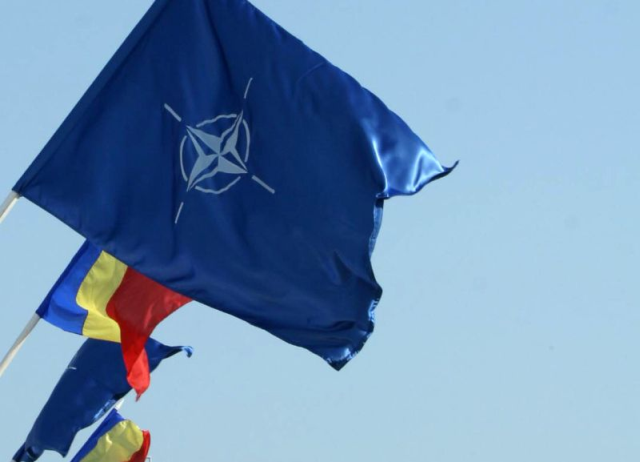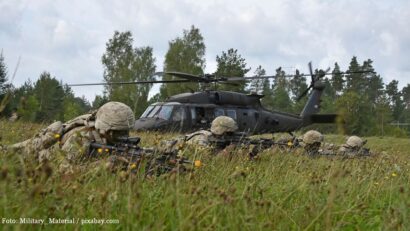Romania, a bridgehead for the US and NATO close to Russian borders?
NATO has stated it will defend its allies against threats of any kind.

Corina Cristea, 17.04.2015, 13:09
The Center for European Policy Analysis (CEPA) in Washington has recently published a study about how to strengthen the defence of NATO’s eastern allies. According to CEPA analysts, a strategy regarding anti-access and area denial capabilities is necessary for the defence of Eastern-European countries. The objective would be for NATO’s border countries to hold sophisticated weaponry and this would entail great costs for any attempt to launch a military attack.
The study emerges at a time when a growing number of countries are joining the effort of strengthening the Eastern flank because of the situation in Ukraine and because of Moscow’s hostile attitude. On the other hand, the Russian Foreign Ministry says it is very clear to see that Russia is not a threat. Romania’s leadership is turning this country into a bridgehead for the US and for NATO close to the Russian border and, based on circumstantial factors, it is willing “to sacrifice its interests of maintaining stability” in the Black Sea area, says Moscow, commenting on the Alliance’s intention of moving heavy NATO military equipment to Romania. Here is the Radio Romania correspondent to the Russian Federation, Aleksander Beleavski:
“For more than a year, as a result of the Ukrainian crisis and amid the significant deterioration of the Russian-Western relationship, NATO and Russia are in a long-running dispute, which is already redrawing the military map of Eastern Europe. The model bears a disturbing resemblance to the traditional European model from the height of the Cold War. Back then conventional risks were concentrated on the northern and southern flanks, where the Warsaw Pact countries and NATO had common borders. The current military opposition between Russia and NATO amounts to an increased military presence on the same two flanks, but with new actors. Another major difference is the greater strategic and geopolitical importance of the southern flank, where Romania is located. Controlling the Black Sea strategic area is essential, as it is close to the Ukrainian conflict. It is also close to the routes of Caspian-sourced oil and to the Middle East. On the southern flank president Vladimir Putin announced he was turning Crimea into a military bastion. This process is taking place rapidly and it has already led to a shift in the balance of power in the Black Sea area, drawing NATO’s reaction”.
A North Atlantic Council meeting in Brussels decided that the Alliance should set up six command centres in the Baltic States, Poland, Romania and Bulgaria, in order to secure a fast progression of the Alliance’s rapid reaction force. NATO Secretary General Jens Stoltenberg stated manpower would not exceed three brigades, that is 30-thousand people in total. The Rapid Reaction Force advanced group, Stoltenberg went on to say, will be made of a 5,000-strong infantry ground brigade, with its navy and air forces, with its special forces and will have the capability to be deployed within eight hours. Recently, General Philip Breedlove, Allied Forces’ Supreme Commander, said in Bucharest that the decision to relocate NATO’s heavy military equipment was to be expected in the near future, in keeping with the previous agreements. Here is what MEP Victor Bostinaru said, in an interview to Radio Romania.
“I believe all these developments, which are implemented as we speak, in the wake of the Newport summit decisions last fall, are the natural responses NATO identified, in the case of a major security threat, generated by Russia’s behaviour, which is a major infringement of international law. Poland and Romania, actually all the eastern flank in its entirety, have today become the Alliance’s main point of interest, for a simple reason: it is here that Russia’s interest lies and it is just as natural for NATO to develop and set up capabilities in the region. A region that had otherwise been rather volatile and had remained like that, in the hopes that the system of alliances and international relations after the collapse of the communist regime would allow for peace to prevail, the use of force to be ruled out of international relations and, accordingly, Russia to pose no open security threat, just as it happened when Crimea was seized and later on, during the major crisis in eastern Ukraine. I believe such developments are natural.”
However, such decisions have triggered a bitter response from Moscow, considering that ‘NATO’s plans to deploy military forces in Romania, that is very close to the Russian border, are inadequate and conflict-prone’.NATO was quick to respond. Here is Radio Romania’s correspondent to Brussels Cerasela Radulescu.
“The information war Russia has been waging on NATO member states is also targeting Romania. NATO spokesperson Carmen Romero said Romania was a reliable NATO ally, and the Alliance defends all it allies against threats of any kind. Russian high-ranking officials have never ceased to make defiant statements, which are groundless, inadequate and do not contribute to providing stability and predictability in Europe — Mrs Romero said, in a message posted on a social network page. Actually, another NATO spokesperson, Oana Lungescu, stated the eventual aim of NATO’s anti-missile shield was to protect its European allies against ballistic missile threats coming from outside the Euro-Atlantic area. In response to Russia’s aggressive actions in Ukraine, NATO has enhanced its military presence in the Alliance’s eastern flank”.
NATO made it clear that all its measures are defensive and in line with its international commitments.






























